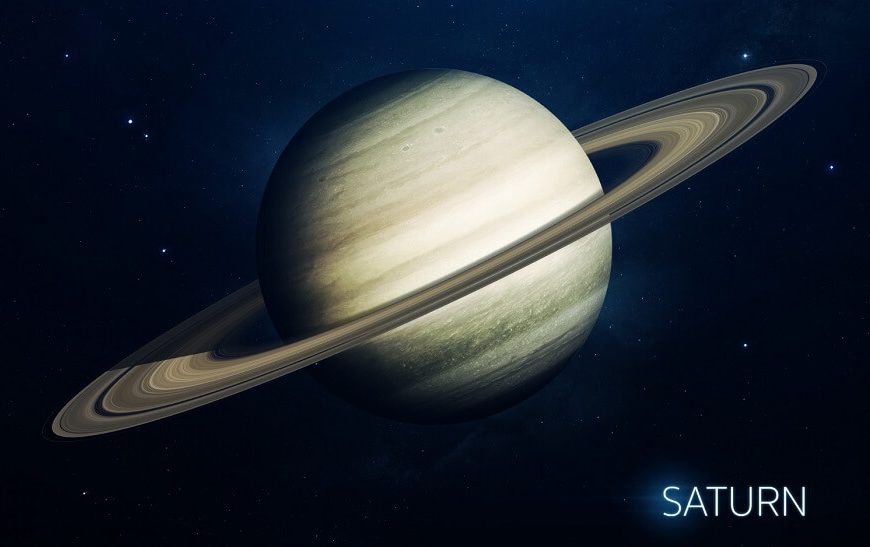Long before the bestselling book ‘The Lord of The Rings’, and the equally popular film series based on it, there was the Planet Saturn.
The ‘Actual Lord of the Rings’, it has mesmerized one and all, with the sheer brilliance of its ‘ringed’ presence. A presence that sees it ‘stand out’ from all other observable planets.
Ever since they were little, children have been asking questions to the tune of, ‘What colour is Saturn?’, and wondering what the names of Saturn’s rings might be. There’s far more to this mysterious planet, than the answers to these simple and heartfelt questions.
In this article, we have presented to you some cool Information about Saturn. This includes some Fun Facts about Saturn, that will leave you even more in awe of this exotic planet.
Are you ready to find out all about Saturn and its stunning set of rings? Let’s begin, with some Saturn Planet Information that every hungry Space explorer must know!
Information about Saturn: Decoding the Sixth Planet from the Sun
‘Awesome’ is probably the adjective that has been most used, when describing Saturn. In all probability, it’s owing to those ethereal ‘rings’, that lend a surreal, almost magical touch to the planet.
It’s only natural, then, that we begin our exploration of Saturn, with a closer look at its Rings.
Saturn’s Rings: Under a Virtual Telescope
When seen from up close, Saturn’s rings don’t lose any of that ‘charm’ that they exude from millions of miles away.
Just like the clouds in the sky are not the ‘balls of cotton’ we imagined them to be as little kids, Saturn’s rings tell a different story when viewed up close. Just like clouds, they are not really ‘solid’. In fact, they are a shimmering combination of ‘Rock and Ice.’
One thing you might not know, is that the distance these rings spread into Space, is nearly the distance between our Earth and its Moon! What’s more, these incredibly thin rings might actually be tiny fragments of Asteroids that shattered before they could even reach Saturn.
Saturn Planet Information: More Interesting Details
As fascinating as those Rings might be, they aren’t the only bit of knowledge we must glean about this magnificent planet.
For starters, Saturn is the second-largest planet in our Solar System. In essence, it is a giant ‘Ball of Gas’, very much like Jupiter. The gases Hydrogen and Helium, are the principal constituents of this gaseous planet.
On account of the most drastic temperatures and pressures that make up the planet, there is absolutely no possibility of life existing here. With a radius of roughly 58,000 kilometres, Saturn is ‘nine’ times wider than our planet. It can also be crowned ‘The King of Moons’, because it has a whopping ‘82’ moons! That’s more than any other planet in the Solar System!
Are you thirsty for more information about this grand planet? Read the following section, to discover some Fun Facts about Saturn!
Fun Facts about Saturn
Up till now, we have merely ‘scratched the surface’, when it comes to uncovering some cool Saturn information. Thirsty for more? Let’s get started!
- You cannot stand on Saturn. Further, kids will delight in knowing that the surface of Saturn is principally made of Helium, the very same gas used to fill up their birthday balloons!
- There’s more to Saturn’s ‘colour’, than meets the eye. The next time your child asks ‘What is Saturn’s colour’, enlighten them with this bit of information. While Saturn might appear yellowish-brown when viewed with the naked eye, it’s a different story when we observe it under a telescope. That’s when you will see it tinged with several ‘small spots’, in colours like Red, Brown and White.
- Saturn’s rings were believed to be its ‘moons.’ Even Galileo, the great astronomer, thought so. It was only in 1655, when the Dutch astronomer Christian Huygens used a better telescope, that this perception changed.
- Saturn’s rings have Names! The names of Saturn’s rings, starting from the ringed planet and moving outward, are, D, C, B, Cassini Division, A, F, G and E.
- At times, those rings ‘disappear’. We knew there was something ‘magical’ about this planet! Since its axis is tilted, we see different positions of Saturn, as it orbits the Sun. While at times we can see all those glorious rings, yet other instances we find that they have miraculously ‘vanished.’ Interesting Fact: the next time this ‘disappearance’ is believed to happen, is sometime in 2024-2025.
- It has the fastest winds, as compared to those on other planets. These winds have actually been measured, and move at approximately 1800 kilometres per hour!
- Its largest moon,Titan’, is enormous. In fact, it is so large it is even bigger than the planet Mercury!
- Its moon might be able to support life. As we have seen earlier, Saturn’s hostile environment makes it impossible for the planet to support Life of any kind. However, things might be a tad different on one of its moons, Enceladus. It was only recently that NASA’s spacecraft found Ice Geysers on its southern pole, leading scientists to believe that life could, indeed, exist there.
- It spins very fast! This, apart from spinning its ‘web of magic’ around us all. The average day on Saturn is 10 hours, 32 minutes and 35 seconds.
- Saturn’s core is very hot. Even the thought of a temperature of 100 degrees Celsius, makes us wince. Just imagine how hot ‘11,700 degrees Celsius’ might be. Yes, that’s the temperature of Saturn’s interior!
- Two tonnes of Saturn’s mass comes from the Earth. Yes, you heard that right. This is on account of the Cassini Spacecraft that was deliberately destroyed in its atmosphere.
We at Eurokids, are all for teaching little children more about the grand universe we live in. If you’re looking where to begin, why not start with Saturn? The ‘mysterious’ nature of its rings makes it an ideal choice to begin with, when it comes to the exploration of the observable Universe.















